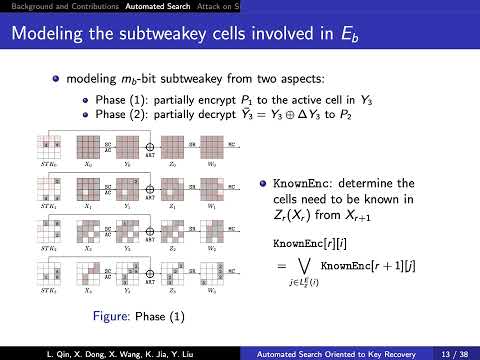| Authors: |
- Lingyue Qin , Institute for Advanced Study, BNRist, Tsinghua University, Beijing, China
- Xiaoyang Dong , Institute for Advanced Study, BNRist, Tsinghua University, Beijing, China
- Xiaoyun Wang , Institute for Advanced Study, BNRist, Tsinghua University, Beijing, China; Key Laboratory of Cryptologic Technology and Information Security, Ministry of Education, Shandong University, Jinan, China; School of Cyber Science and Technology, Shandong Univer
- Keting Jia , Institute for Network Sciences and Cyberspace, BNRist, Tsinghua University, Beijing, China
- Yunwen Liu , College of Liberal arts and Science, National University of Defense Technology, Changsha, China; Hunan Engineering Research Center of Commercial Cryptography Theory and Technology Innovation, Changsha, China
|
| Abstract: |
Automatic modelling to search distinguishers with high probability covering as many rounds as possible, such as MILP, SAT/SMT, CP models, has become a very popular cryptanalysis topic today. In those models, the optimizing objective is usually the probability or the number of rounds of the distinguishers. If we want to recover the secret key for a round-reduced block cipher, there are usually two phases, i.e., finding an efficient distinguisher and performing key-recovery attack by extending several rounds before and after the distinguisher. The total number of attacked rounds is not only related to the chosen distinguisher, but also to the extended rounds before and after the distinguisher. In this paper, we try to combine the two phases in a uniform automatic model.Concretely, we apply this idea to automate the related-key rectangle attacks on SKINNY and ForkSkinny. We propose some new distinguishers with advantage to perform key-recovery attacks. Our key-recovery attacks on a few versions of round-reduced SKINNY and ForkSkinny cover 1 to 2 more rounds than the best previous attacks. |

